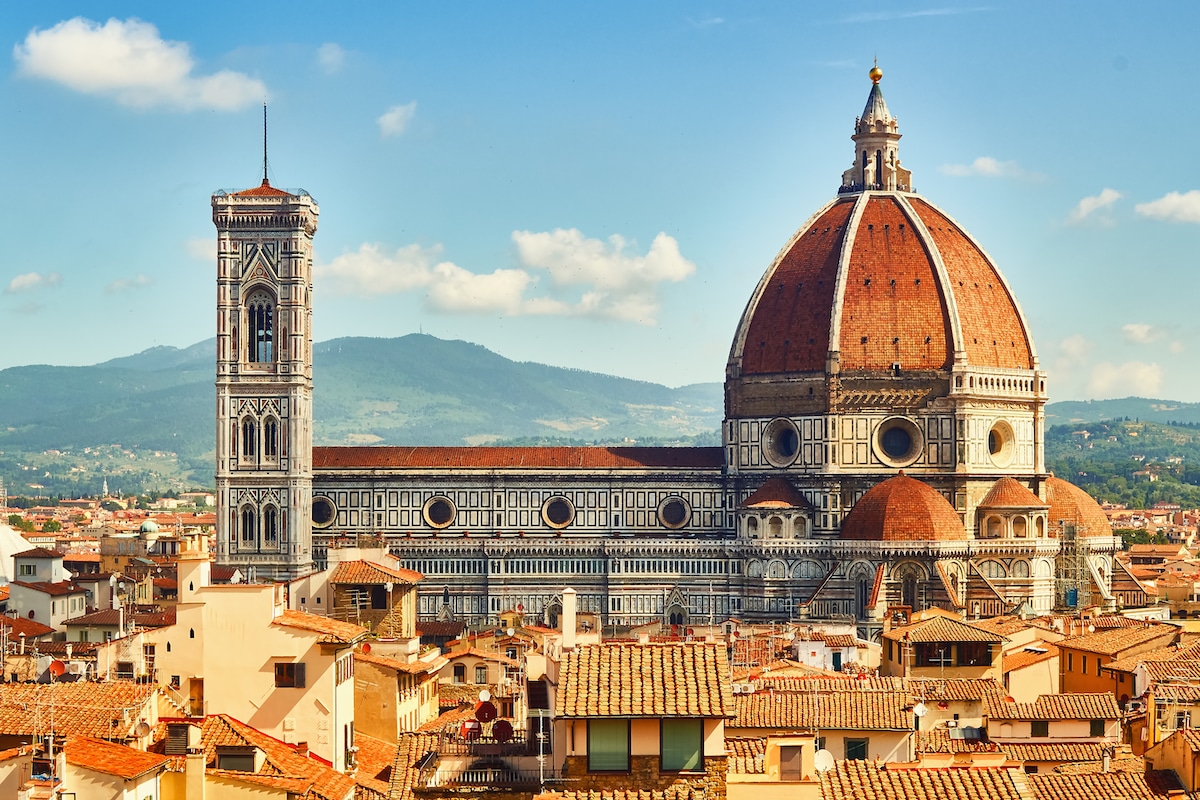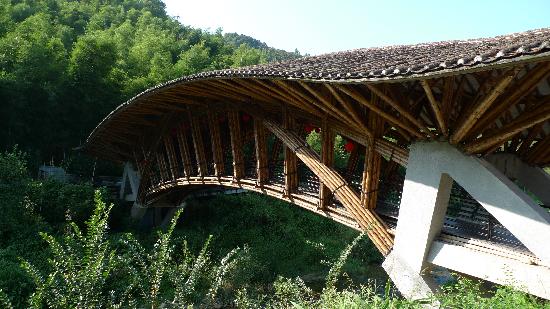If you are reading this text I guess that it is because you have already discovered the other four PA previous to this one. If that’s true you should already be familiar with the Architect Simón Vélez and his work.
Just for all of us to be in the same page I’m going to make a short resume.
Simón Vélez is a Colombian architect born in 1949 and that has specialized in a material very available in his country, the Guadua, a type of Bamboo that can reach 30 meters high and 22 centimetres of diameter and that competes with the functionality of more conventional materials such as concrete or steel. He is famous thanks to some constructions such as The non-religious cathedral, the cross waters ecolodge and, finally, the Pavilion of Zeri.
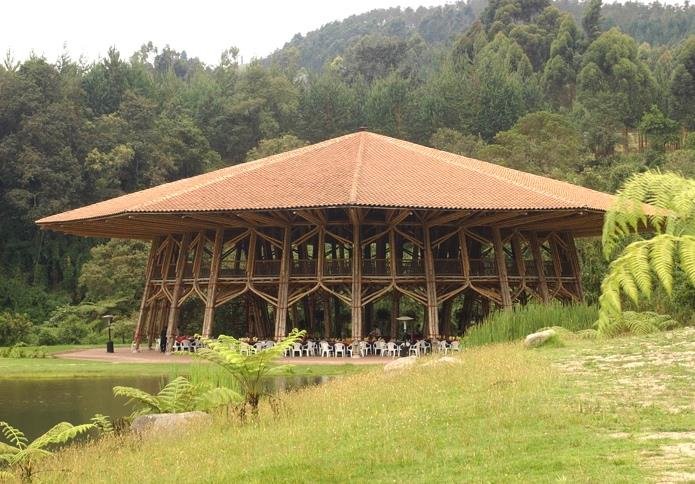
This last one, the Pavilion of Zeri, probably sounds familiar to you because it is the one we talked about in the Pa-3, even though, in this article we’ll do not only an expansion on the subject but also an analysis of the structure and the way it works.
As we already know, the Pavilion of Zeri is an open structure made of Guadua with a prominent roof and a set of inclined frames. In plan, the roof has decagonal shape
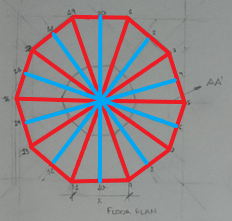
As we can see in this image, the floor plan is divided in ten identic parts. Each one of them has a central axis, those marked in blue, perpendicular to the edge. The ones marked in red are those attached to the point where the edge of the roof changes.
The following drawings give a more accurate approach to the way the structure is build and supports itself.
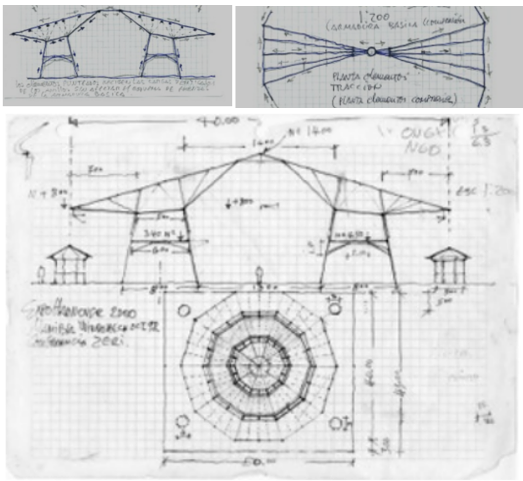
As we can see the longitudinal section of the structure is based on two symetric structures that support the roof. In total there are 20 of these longitudinal elements, two per each identical part seen on the floor plan.
To make it more clear , each of the sections showed in the last two photos would be placed in each of the blue and read lines seen in the first drawing.
In order to understand the structure and all its complexity I have made the following drawings.
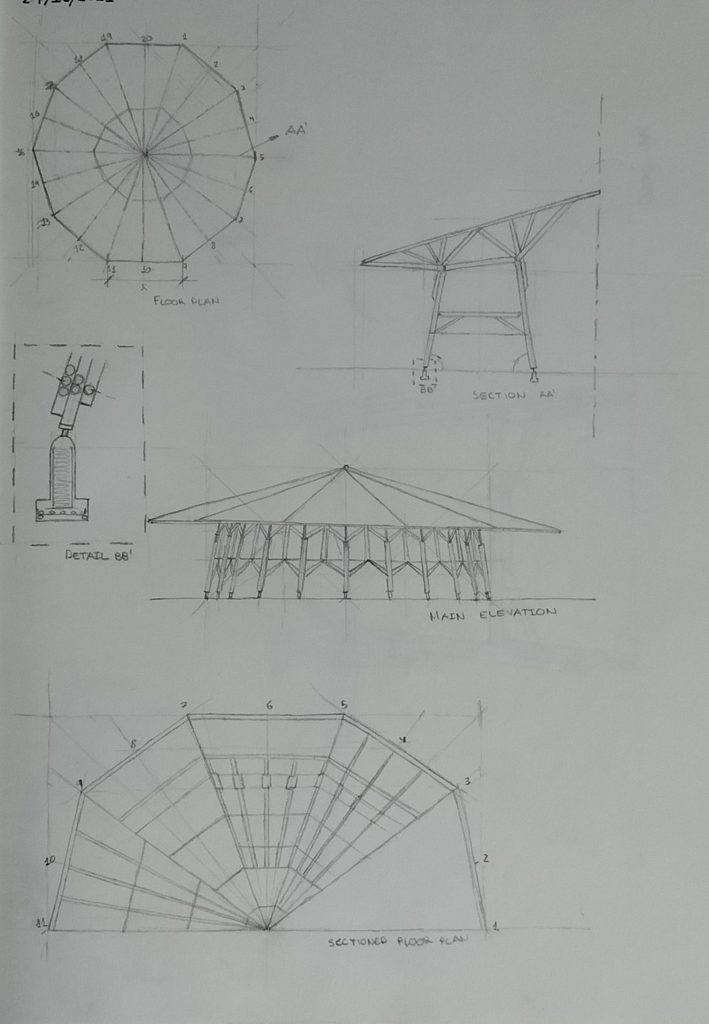
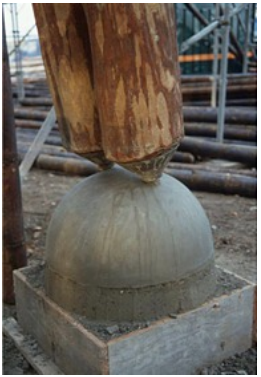
One of the aspects of this building that intrigued me more was how could these pieces of guadua be attached to the ground. I was surprised when I found out that it only took a reinforced concrete piece attached to the ground and a simple union between this and more concrete placed into the piece of bamboo. This solution is brilliant and simple at the same time.
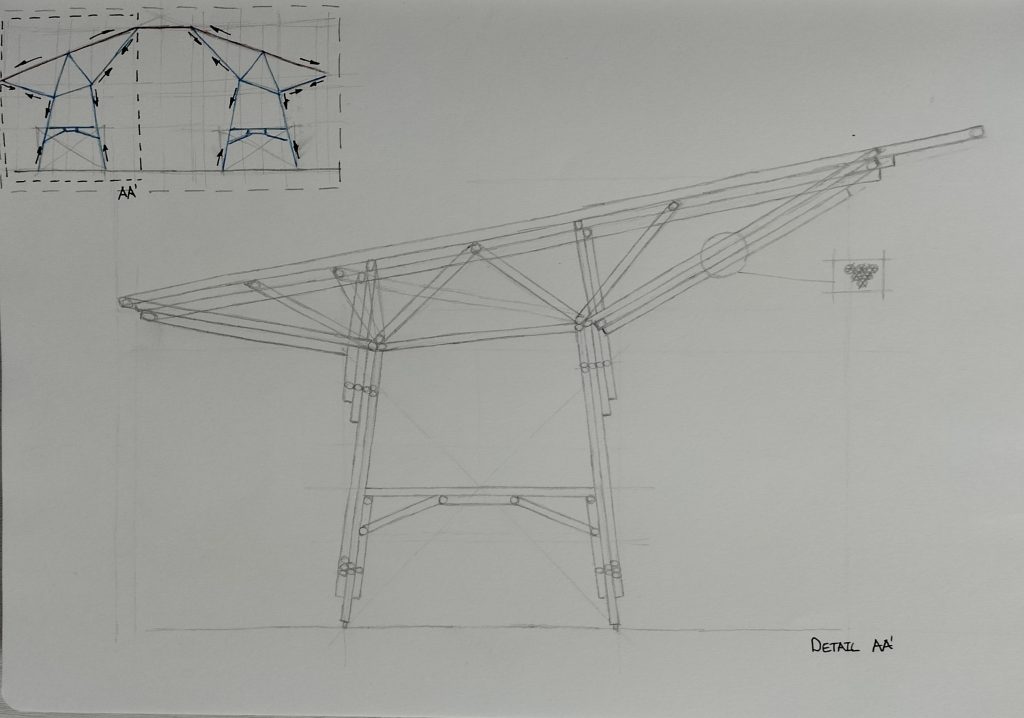
Taking a closer look into the complexity of the structure we can see the huge amount of bamboo needed to make the structure. But nevertheless, this is not an incovenient. as we have said in other posts, the guadua is an excellent material that can grow 11 centimetres a day. That means that we can dispose of 4 meter long pieces in a bit more than a month.
Weight could also be a problem, transporting and placing that amount of guadua doesn’t seem easy but that does not represent a problem because of the lightness of the material. The Zeri pavilion has a total of 500 tons of weight, where 400 tons are concrete, 10 tons of steel and just 90 tons of guadua. It is evident that this propoortion does not correspond with what we could think of it because we can not barely see other elements that are not bamboo if we don’t take a closer look.
Now lets take a look on the several aspects that matter on the analysis of a building.
Place: The Zeri pavilion is located in Colombia, close to Manzinales, more concretly in the “Recinto del Pensamiento”
This is a green space with lots of free space for wandering. This creates a sensation of harmony guarded by the relation of organicism guarded by the Pavilion. This buildign is perfectly integrated into the place.
In order to see by yourselves the place, here you have a link to the location in google earth:
If this does not work use the following link:
Space: We can say that this is some kind of classical space because of its circular shape with a centre. Obviously it is not a classical structure but it kind of emulates the old centralized structures with lots of axis of symetry, concretely 10.
Form: If we were to think about a special characteristic of this building this one would be its symmetry. It has, not one but 20 axis of symmetry making it complete and peaceful.
Bibliography:
